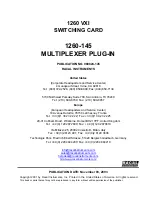
HART Multiplexer System KFD*-HM*-16
Diagnosis and fault elimination
DO
C
T-0
120D
06/
2014
52
8
Diagnosis and fault elimination
8.1
General
This section provides operating instructions to be used if faults occur and describes
the possible causes of such faults.
Faults and failures are signalled via the following means:
•
LEDs (see section 5.4.3 and 8.2)
•
Status/response code (see section 8.3)
•
Extended device status (see section 8.4)
8.2
LED indication
The following fault conditions can occur during the initialization phase after start-up:
8.3
Status/response code (response code)
8.3.1
General
Two status bytes, also referred to as the "Response code" are contained in every
message from a field device. These contain three types of information:
•
Communication errors
•
Command responses and the
•
Device status.
Depending on Bit 7, the first two types are contained in the first status byte. The
device status is always transferred in the second byte.
Note
Red
Green
Orange Cause
Corrective action
Off
Off
Off
• No power supply available.
• LED(s) defect
• Check power supply.
• Select DIP switch 1, isolate power
supply briefly. LEDs flash one after the
other.
On
On
On
Fault in device hardware
(CPU, ROM)
Send device to Fuchs for
repair.
On
Off
Off
Fault in device hardware
(CPU, ROM)
Send device to Fuchs for
repair.
On
On
Off
• Fault in device hardware
(CPU, RAM)
• Device parameter assignment
incorrect (parameter Loop
Switch Delay, command 161)
• Send device to Fuchs for
repair.
• Parameterize device again. If this is
not successful, the device must be
sent to Fuchs for repair.













































